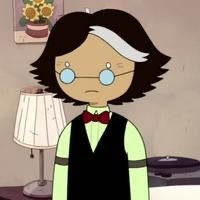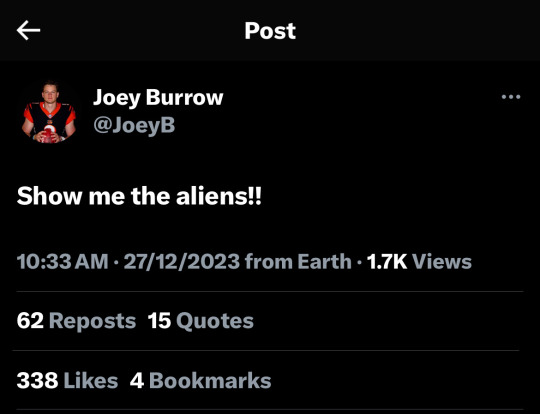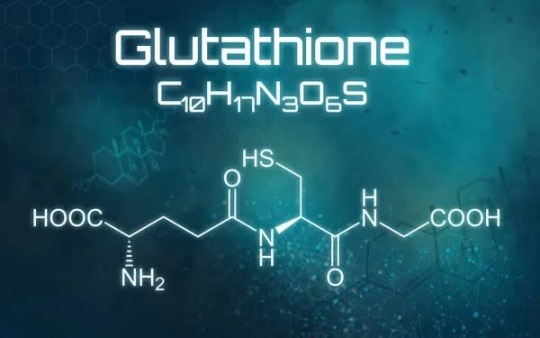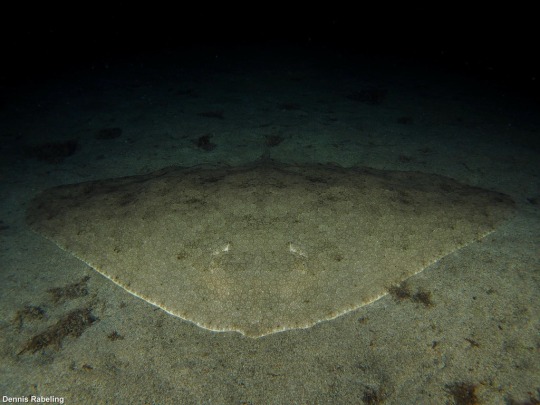#science nerds
Explore tagged Tumblr posts
Text


These two need to talk


#fionna campbell#fionna and cake#simon petrikov#ice king#adventure time#dr. two brains#wordgirl#Two Old Men Sharing Thier Depression and Truama Over Drinks#Science Nerds#Tom Kenny is cool 😎#Crossovers Don’t Just Happen
801 notes
·
View notes
Text

Tendo got a Polaroid for Christmas and made it everyone’s (see: Newt and Hermann’s) problem. He of course gave them all to the boys to decorate their new apartment.
#I just love them your honor#I’ll stop drawing them eventually but not today#newton geiszler#hermann gottlieb#Newmann#pacific rim#my art#science nerds#k-science
228 notes
·
View notes
Text
🔬🌀Demystifying the Krebs Cycle: A Deep Dive into Cellular Respiration! 🌀🔬
Prepare for a thrilling journey into the heart of cellular metabolism! 🌟✨ Today, we unravel the intricacies of the Krebs Cycle, also known as the Citric Acid Cycle or Tricarboxylic Acid Cycle, a cornerstone of energy production in our cells. 💡🤯
The Krebs Cycle: Named after its discoverer, Sir Hans Krebs, this metabolic pathway occurs within the mitochondria and is a central hub in cellular respiration.
🔍Step 1: Acetyl-CoA Entry
Acetyl-CoA, derived from the breakdown of glucose or fatty acids, enters the cycle.
It combines with oxaloacetate to form citrate, a six-carbon compound.
🔍Step 2: Isocitrate Formation
A rearrangement converts citrate into isocitrate.
The enzyme aconitase facilitates this transformation.
🔍Step 3: Alpha-Ketoglutarate Production
Isocitrate undergoes oxidative decarboxylation, shedding a CO2 molecule and yielding alpha-ketoglutarate.
NAD+ is reduced to NADH in this step.
🔍Step 4: Succinyl-CoA Synthesis
Alpha-ketoglutarate loses CO2 and acquires a CoA group to form succinyl-CoA.
Another NAD+ is reduced to NADH.
This step is catalyzed by alpha-ketoglutarate dehydrogenase.
🔍Step 5: Succinate Formation
Succinyl-CoA releases CoA, becoming succinate.
A molecule of GTP (guanosine triphosphate) is generated as a high-energy phosphate bond.
Succinate dehydrogenase is pivotal, transferring electrons to the electron transport chain (ETC).
🔍Step 6: Fumarate Generation
Succinate is oxidized to fumarate with the help of the enzyme succinate dehydrogenase.
FADH2 (flavin adenine dinucleotide) is formed and transfers electrons to the ETC.
🔍Step 7: Malate Formation
Fumarate undergoes hydration to form malate, catalyzed by fumarase.
🔍Step 8: Regeneration of Oxaloacetate
Malate is oxidized back to oxaloacetate.
NAD+ is reduced to NADH.
Oxaloacetate is ready to initiate another round of the Krebs Cycle.
The Krebs Cycle - an intricate dance of chemical transformations fueling the cellular machinery of life. 🕺💃 Dive deeper into cellular respiration, where molecules tango to generate ATP, our cellular energy currency!

📚References for In-Depth Exploration📚
Berg, J. M., Tymoczko, J. L., & Stryer, L. (2002). Biochemistry (5th ed.). W. H. Freeman. Chapter 17.
Voet, D., Voet, J. G., & Pratt, C. W. (2008). Fundamentals of Biochemistry (3rd ed.). John Wiley & Sons. Chapter 17.
Lehninger, A. L., Nelson, D. L., & Cox, M. M. (2008). Lehninger Principles of Biochemistry (5th ed.). W. H. Freeman. Chapter 17.
#science#biology#college#education#school#student#medicine#doctors#health#healthcare#biochemistry#cell#science nerds
116 notes
·
View notes
Text
So if mycelium is like the Wi-Fi and plants talk to each other, does that mean my house plants are lonely
#plants#plantblr#plantcore#houseplants#house plants#mushrooms#Mycelium#leaves#garden#gardening#forest#woods#nature#moss#witch#monstera deliciosa#alocasia#soil#soil health#soil science#soil testing#science#science question#plants are friends#science nerds#biodiversity#botany#botanical#botanic garden#botanist
21 notes
·
View notes
Text
Look, I don't know what else to say about this, but...


...same vibes, right?
#carl sagan#viktor#arcane#viktor arcane#animation#nerd shit#planets and stuff#science nerds#turtleneck
4 notes
·
View notes
Text


Drawing, Butterfly; brush and watercolor on paper; 15.7 × 17.5 cm (6 3/16 × 6 7/8 in.); Gift of Hamill and Barker; 1961-105-120-a (Cooper Hewitt)
Drawing, Butterfly; brush and watercolor on paper; 17.7 × 22.5 cm (6 15/16 × 8 7/8 in.); Gift of Hamill and Barker; 1961-105-120-b (Cooper Hewitt)
#butterfly#butterflies#smithsonian#smithsonian institution#cooper hewitt#smithsonian design museum#design#drawing#watercolor#19th century#1800s#1830s#vintage#illustration#insects#lepidoptera#rhopalocera#because butterflies#csi art#science nerds
5 notes
·
View notes
Text
For any nerds out there who might not know (I’m looking at you Donnie kinnies)
The international championship for high school robotics started today!!! If you wanna watch some robots competing in a silly little game you can tune in to one of FRC’s livestreams on twitch today, tomorrow &/or Saturday!!! (April 18th-20th) (Saturday’s the elimination rounds & finals so you’ll really want that one if you can)
#spread the word#make sure all the nerds in your life know#robotics#robots#Donnie kinnies#Donnie kins#we can’t all be Donatello#that’s not mathematically possible#Donnie would love it#you should check it out#frc#frc robotics#frc crescendo#frc 2024#frc tumblr#first robotics competition#robot#robotics competition#internationals#championship#nerd#nerd shit#nerd stuff#nerd talks#nerds#science nerds#i love nerds#stemblr#women in stem#stem
9 notes
·
View notes
Text
#poll blog#random polls#silly polls#stupid polls#polls#silly poll#tumblr polls#poll#pick one#this or that#science poll#school poll#biology#chemistry#science nerds#i love science#science#academics#academia#science academia#sciencecore#autistic poll#special interest#science stuff#science side of tumblr#women in science#women in stem#stemblr#stem academia#science is cool
3 notes
·
View notes
Text
STEM Kids Shenanigans (Chapter 28)
Chapter 28: Feral Newspaper Hound
Dante was avoiding Stephan. That guy had the nickname 'snake' for a reason. First he tries to spy on them with a bear, and now it seemed that he was blackmailing Melanie. Admittedly, Dante didn't like Melanie at all, but blackmail was still wrong.
The real question was what Melanie could possibly have that Stephan could use to blackmail her with.
Melanie was not well-liked, but she didn't seem to be hiding anything. Even when trying to disband the STEM club, she was weirdly honest about it. Maybe that honesty was carried over to other parts of her life, like when she was with Stephan. In his head, Dante whittled it down to three options.
Option 1: Melanie told Stephan a secret, and Stephan planned to use it against her.
Option 2: Stephan found something out about Melanie and was planning to use it against her if she didn't do as he said and wanted.
Option 3: Melanie and Stephan were involved in something together, and then Stephan decided to turn on her.
Stephan may have been one of Melanie's only friends, but Melanie wasn't Stephan's only friend.
Not by a long shot.
People constantly went in and out of the room and Stephan knew every last one of them. This was freaky.
He had to tell the others.
(PAUSE)
"So let me get this straight," Layla said, "Stephan has got friends basically everywhere and probably knows everyone's secrets. And you want to know what he is blackmailing Melanie about?"
"Yeah, pretty much," Dante said.
"I'm in. What do you need?" Angelo asked.
"You're not even going to question him?" Layla asked.
"I don't like Melanie, but I know she doesn't deserve to be blackmailed by Stephan," Angelo said.
"I also know that she'd never tell us," Layla said. "She calls us delinquents right to our faces and she'd think we're blackmailing her."
"Even though she's already being blackmailed?" Yujin asked. "How ironic."
"We still need to figure it out," Dante said.
"And while we're at it, we'll have to figure out how to do so without getting caught," Angelo said.
"Like what? Giving Stephan one of his own spy bears?" Dante asked.
"You know what, my neurodivergent friend?" Angelo said. "Yes. But not literally, of course. What do we disguise it as?"
"Something that he would accept without question," Yujin said.
"Until then, I'll see if there's anything more I can find out," Dante said.
(PAUSE)
Dante did more spying on Stephan, this time for interesting quirks. Stephan didn't seem to have anything interesting that he did. He was completely normal, except for being a lying snake of a person. Dante heard Melanie's footsteps, and quickly buried his head into his book.
"Delinquent," she hissed in his direction, as she went to Stephan.
This was gold. They were totally going to have an interesting conversation in there, and Dante would get to hear it himself.
"Is there anything else I can give you?" Melanie pleaded. "Please, I just want this to stop. I have money. How much do you want?"
"I don't care about money," Stephan told her. "This is the coolest thing I could ever have stumbled across. Really, Melanie Sainsbury doing-"
"That's enough, Stephan!" Melanie snapped. Stephan sniggered.
"That's only the tip of the iceberg, though. We both know that. Just wait until people see this. It'll be everywhere."
"No, no, no, please! I'll do anything, please!"
Stephan leaned forward and smirked. "Anything?"
"Yes, anything! Just please keep this a secret," Melanie begged. It truly tugged on Dante's heart strings.
"OK. You do what I want. Just don't complain when you don't like it," Stephan said. "Got it?"
"Got it," Melanie said. She scurried out, thankfully not noticing Dante a second time. After a few seconds, Dante left too.
That was wasted time, Dante thought. Now, we'll just have to wait and see like everyone else. How boring.
To read the other parts of this fic, see Masterlist.
#creative writing#my writing#my WIP#writers on tumblr#writers#writeblr#writerscommunity#science fiction#science nerds#friendship#humour#autistic black boys#fantasci tumblr
3 notes
·
View notes
Text

What is this man on about 😂😂
4 notes
·
View notes
Text
"Delving Deeper into Glutathione: The Biochemistry Behind its Protective Powers"
Hello, Tumblr community! 🌿 Today, let's embark on an intellectual journey into the intricate world of Glutathione, a molecular marvel with profound implications for your body's defense mechanisms and overall vitality. 🧬
The Biochemical Symphony of Glutathione:
Glutathione, abbreviated as GSH, is a low-molecular-weight tripeptide comprised of three amino acids – cysteine, glutamic acid, and glycine. Its presence is pervasive, with significant concentrations found within virtually every cell of your body. At its core, GSH serves as a central hub for a variety of biochemical reactions, many of which are critical for maintaining cellular health.
🛡️ Shielding Against Oxidative Stress:
At the heart of Glutathione's prowess lies its ability to act as an antioxidant. To understand this, we must venture into the realms of free radicals highly reactive molecules that can wreak havoc on your cellular structures. GSH swoops in like a molecular guardian, neutralizing these renegade radicals and preventing cellular damage.
🔄 Recycling Antioxidants:
GSH doesn't stop at just neutralizing free radicals. It has a unique capacity to regenerate other antioxidants, such as vitamin C and vitamin E, which are also instrumental in combating oxidative stress. This recycling process amplifies the body's antioxidant defenses, making it a true linchpin of cellular protection.
💪 The Multifaceted Benefits of Glutathione:
1. Immune Resilience: By fortifying the immune system, Glutathione empowers your body to defend against pathogens and infections more effectively.
2. Detoxification Dynamo: As a vital component in phase II detoxification, GSH aids in the removal of harmful substances, thereby bolstering liver health and overall detox processes.
3. Anti-Aging Elixir: The anti-aging properties of Glutathione are tied to its ability to quell oxidative stress and cellular damage, potentially slowing down the aging process.
4. Skin Health: Some individuals explore Glutathione for its role in skin lightening and brightening, although its effects can vary among individuals.
📚 Diving into the Research:
1. "The Role of Glutathione in Cellular Response to Chemotherapeutic Agents"
- A scholarly article by Maria Serpina and John D. Hayes, featured in the Journal of Biological Chemistry.
2. “Glutathione as a Biomarker in Oxidative Stress: An Overview"
- An in-depth review by Farzaneh Rahmani and Hossein Aslani, published in the Journal of Medical Biochemistry.
3. "Mechanisms of Glutathione-Dependent Protection Against Oxidative Stress and Nitric Oxide-Induced Neurotoxicity in a Neuronal Cell Line"
While Glutathione supplements are gaining popularity, it's imperative to seek counsel from a healthcare professional before incorporating them into your regimen. Your individual health and physiology can influence the efficacy and safety of supplementation.
Stay curious, stay informed! 📖✨

#science#biology#college#education#school#student#medicine#doctors#health#healthcare#chemistry#bioenergy#biochemistry#science nerds#study aesthetic#public health#physical health
44 notes
·
View notes
Text

James McNeill Whistler. The Ocean Wave. 1883-1884. National Museum of Asian Art, Washington, DC.
#james mcneill whistler#the ocean wave#national museum of asian art#smithsonian#smithsonian institution#freer gallery of art#ocean#waves#painting#1800s#1880s#watercolor#watercolour#watercolor on paper#watercolour on paper#because oceans#because seas#csi art#science nerds#vintage#art#19th century
3 notes
·
View notes
Text
STEM Kids Shenanigans (Chapter 40)
Chapter 40: A Proper Conclusion
Angelo came to school wearing a pink shirt and with a pink and green charm bracelet, courtesy of Mirella Riva. His exhausted parents couldn't be bothered to tell him to remove it, and Mirella told him that he was pretty. Angelo liked it because it was a symbol of rebellion against the prefects of the school in general, and against Melanie Sainsbury specifically.
"Still carrying on the tradition, huh?" Dante teased, tying his hair back with a pink scrunchie. "Same here, man! Good to see it!" The boys shared a laugh.
Melanie sat in her accustomed seat, staring at the floor. Just a few more days before she could leave this dump for good. No apology she ever gave would be accepted by anybody. Sonia would be fine, but she was doomed.
"I hope Melanie does a better job at her next school than she did at this one," Dante muttered. "Otherwise she won't last long."
"I hope they're getting rid of Stephan too, while they're at it," Layla said. "Can't stand him."
"So smarmy," Yujin shuddered.
Melanie, overhearing everything they were saying about her, did her best not to look back at them. They were right about Stephan, and they were right about her, too. She should have taken a leaf out of her mother's book instead of her father's about people that weren't like her.
Maybe this mess wouldn't have happened.
(PAUSE)
Melanie had to hide during break. Everybody knew her and none of it was good. She had to apologise to the STEM club eventually, but she would be torn to shreds if seen. Yujin said that admitting what you did wrong was one of the most important parts of an apology, so Melanie made a list of what she'd done.
Repeatedly barged into STEM club meetings
Sent Stephan to spy on them
Accused them of breaking rules and trying to get them expelled
Not listening to their instructions when handling the slime they were making
Being rude while enforcing rules
Name-calling (calling them delinquents)
Repeatedly trying to disband the STEM club
Searching Layla and Yujin when she had no authority to do so
Looking at the list made Melanie nauseous. She'd really done a lot of stuff.
And now she was going to apologise for that stuff.
(PAUSE)
Clutching the list she'd made, she waited for the STEM club to be alone. The cafeteria was a no-go, and so was registration. So she found them in the corridors and approached shyly. "Hello again. It's . . . me," she said.
"We know who you are," Angelo said. Yujin was already behind him. Dante and Layla were more overt with their anger, glaring at her. "Do you have something to say?"
"Yes, I do, actually," Melanie said. "I'm apologising to you."
"Oh, here we go," Dante groaned.
"No! I actually want to apologise!" Melanie insisted. "I'm sorry for calling you delinquents. I'm sorry for barging into your meetings, for trying to get you expelled, for sending Stephan to spy on you-"
"That was you?!" Angelo spluttered.
Melanie's eyes opened wide. "Oh. You didn't know that."
"You sent Stephan to get that photo of me that ended up on the front of the school newspaper?" Angelo asked.
The former prefect looked at her shoes. "Yes."
"Gotta say, that was a cool photo," Angelo murmured.
"ANGELO!" Layla, Dante, and Yujin yelled.
The little inventor looked at his friends with confusion. "What? It was!"
"It was wrong of her to send that sneaky little snake to follow us around!" Dante smacked Angelo around the head.
"That's why I'm apologising. I targeted you because you got into the STEM club and I was jealous about how you got in and I didn't."
The four looked at Melanie with jaws agape. "Really?" Yujin asked. "But that's so small and petty."
Melanie looked at her shoes. "I know."
Angelo was the first to speak. "I can't speak for anybody other than myself, but I will be able to forgive you. I won't be able to forget what you did, and the whole sending Stephan to spy on us is creepy as hell. All I can hope for is that you never do any of this to another person ever again. You might just make some real friends that way."
"I won't. I promise."
"Good," Angelo said. "And for the record, we would have just let you in if you'd only asked."
The brunette bully's hands went slack. "What?" she spluttered.
"Yes. We all thought that rule was dumb too," Dante said, the remaining three members muttering in the affirmative. "We just wanted to talk about science stuff. No world domination, no bullying, no nothing."
"Oh," Melanie said.
"So, now this is all explained, just know that I forgive you and I hope you live a good life somewhere away from here," Angelo said.
"Me too," Layla said. "Pick your friends wisely."
"I will," Melanie said, smiling a small smile. She scurried away quickly, still rather skittish.
"I hope she actually learns something from the experience," Yujin said.
"I think she will," Angelo said.
(PAUSE)
Next Monday, when registration rolled around and people noticed that Snitch Sainsbury was gone, many celebrated and joked about it. The STEM club, however, did not acknowledge it. They went on with their lives and conducted more experiments.
Yujin finally got to show off her rocket designs.
Dante told people more facts about the brain.
Layla's plant-based hair care business was thriving.
And Angelo had many more tests to conduct on his flying skateboard.
To read the other parts of this fic, see Masterlist.
OK, folks, the buck ends here! This is an awful way to tell you, but this is the final installment of STEM Kids Shenanigans! (Except for maybe a few spinoff oneshots if you ask nicely in the asks section.) If you liked it, reblog and comment because they keep writers like me living! Coming up next will be The Poisoned Prodigy.
#creative writing#my writing#my WIP#writers on tumblr#writers#writeblr#writerscommunity#science nerds#science fiction#friendship#humour#autistic black boys#fantasci tumblr
3 notes
·
View notes
Text
ah, my sleep paralysis demon
I love butterfly rays because half of the images of them online come in two varieties and it’s

a) a baybey!

b) I know what you are.
#sea creatures#local jellyfish speaks#marine biology#marine biology memes#science nerds#cartilaginous fish#chondrichthyes
92K notes
·
View notes
Text
Kai: *drinking slushy*
Kai: AH SHIT!
Cole: You good, bro?
Kai: Eh, I will be.
Zane: Try not to drink a slushy too quickly. I doubt any of us would want to experience sphenopalatine ganglioneuralgia.
Kai: …what?
Jay: Brain freeze, Kai.
Kai: Why couldn’t he just say “brain freeze?”
Jay: Technically speaking, he did. He just used the scientific term.
Cole: How do you know all this?
Jay: Cause I actually paid attention in science when I was in middle school.
0 notes